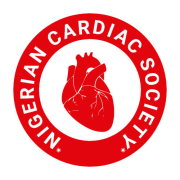

Author(s): Yabets Tesfaye Kebede*, Abel Tezera Abebe and Bekri Delil Mohammed
Background: Over 1 billion people worldwide suffer from the common chronic medical condition of hypertension. A hypertensive crisis occurs when blood pressure exceeds 180/110 mmHg. Depending on whether the target organ is harmed, the situation may be presented as a hypertensive emergency or urgency.
Objective: To assess the prevalence and risk factors of patients with hypertensive crises who visited the Emergency Outpatient Department (EOPD) at Adama hospital medical college in Adama, Oromia, Ethiopia, between August 10 and August 30, 2021, G.C.
Methodology: A cross-sectional, prospective study on hypertensive crisis was conducted at Adama Hospital Medical College from August 10 to August 30, 2021 G.C. The data was collected using a standardized questionnaire, validated for completeness, and analyzed using SPSS. The findings were tabulated, and conclusions and recommendations were conveyed.
Result: A total of 74 individuals with hypertension in crisis were identified. Of these, 56.8% were men, resulting in an M:F ratio of 1.31:1. Those between the ages of 66 and 75 were the most affected. At presentation, 91.9% of the study participants were known hypertensive patients. Of the known hypertensive patients, the majority (33.8%) were known to have been hypertensive for 5-10 years. Of the known hypertensive patients, 48.6% were found to be adherent. Hypertensive urgency was discovered to be far more common than hypertensive emergencies (63.5% vs. 36.5%). Headache was the most common presenting symptom, and most of the patients (36.5%) presented to the health setup in less than 24 hours. The main risk variables identified were drug discontinuation, family history of hypertension, salt consumption, and alcohol usage. The main excuse for non-adherence was the cost of the medications. More than half of the patients do not have any additional comorbidities, and of those who do have, diabetes mellitus is the most prevalent. Stroke was identified as a major complication.
Conclusions and Recommendations: Hypertensive crises are one of the most prevalent reasons for EOPD admission and are linked with significant consequences. At presentation, most of the study subjects were known hypertension patients. Diabetes mellitus was discovered to be a comorbid condition in one-quarter of them. Although more than half of the patients have improved, the death rate remains high. Infrastructure and capacity building to provide hospitals with the requisite baseline investigations are among the recommendations of the government. Health practitioners are expected to make improvements, such as educating the public about the need for lifestyle changes and evaluating and managing any hypertension problems.